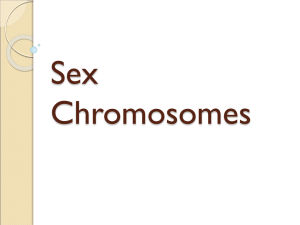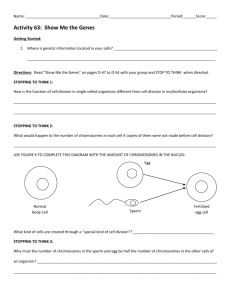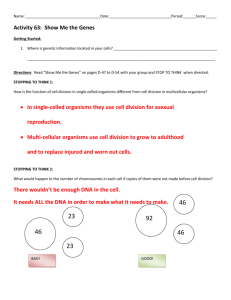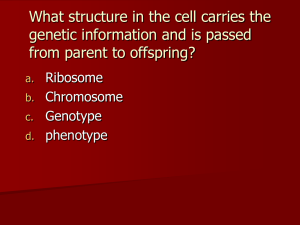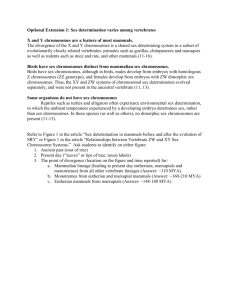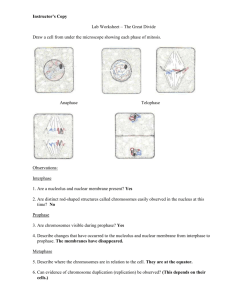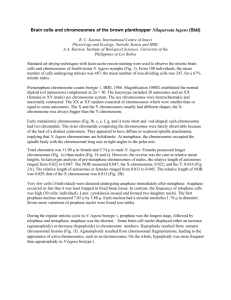Week 2 Question 2 - Describe the evidence that the evolution of sex
advertisement
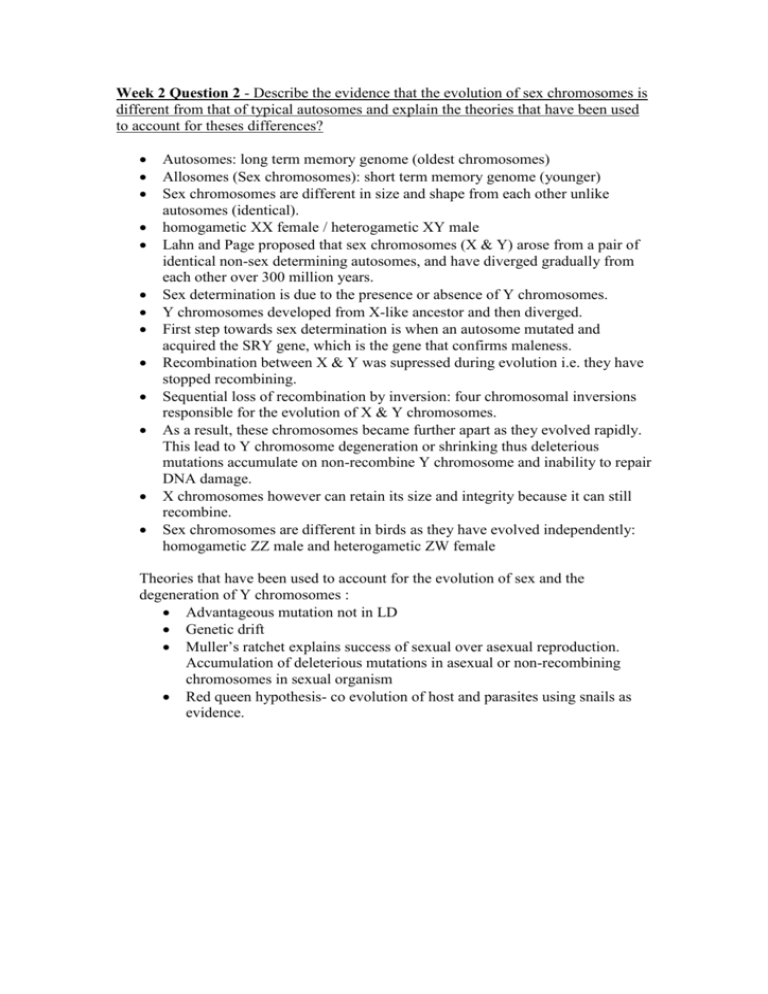
Week 2 Question 2 - Describe the evidence that the evolution of sex chromosomes is different from that of typical autosomes and explain the theories that have been used to account for theses differences? Autosomes: long term memory genome (oldest chromosomes) Allosomes (Sex chromosomes): short term memory genome (younger) Sex chromosomes are different in size and shape from each other unlike autosomes (identical). homogametic XX female / heterogametic XY male Lahn and Page proposed that sex chromosomes (X & Y) arose from a pair of identical non-sex determining autosomes, and have diverged gradually from each other over 300 million years. Sex determination is due to the presence or absence of Y chromosomes. Y chromosomes developed from X-like ancestor and then diverged. First step towards sex determination is when an autosome mutated and acquired the SRY gene, which is the gene that confirms maleness. Recombination between X & Y was supressed during evolution i.e. they have stopped recombining. Sequential loss of recombination by inversion: four chromosomal inversions responsible for the evolution of X & Y chromosomes. As a result, these chromosomes became further apart as they evolved rapidly. This lead to Y chromosome degeneration or shrinking thus deleterious mutations accumulate on non-recombine Y chromosome and inability to repair DNA damage. X chromosomes however can retain its size and integrity because it can still recombine. Sex chromosomes are different in birds as they have evolved independently: homogametic ZZ male and heterogametic ZW female Theories that have been used to account for the evolution of sex and the degeneration of Y chromosomes : Advantageous mutation not in LD Genetic drift Muller’s ratchet explains success of sexual over asexual reproduction. Accumulation of deleterious mutations in asexual or non-recombining chromosomes in sexual organism Red queen hypothesis- co evolution of host and parasites using snails as evidence.
